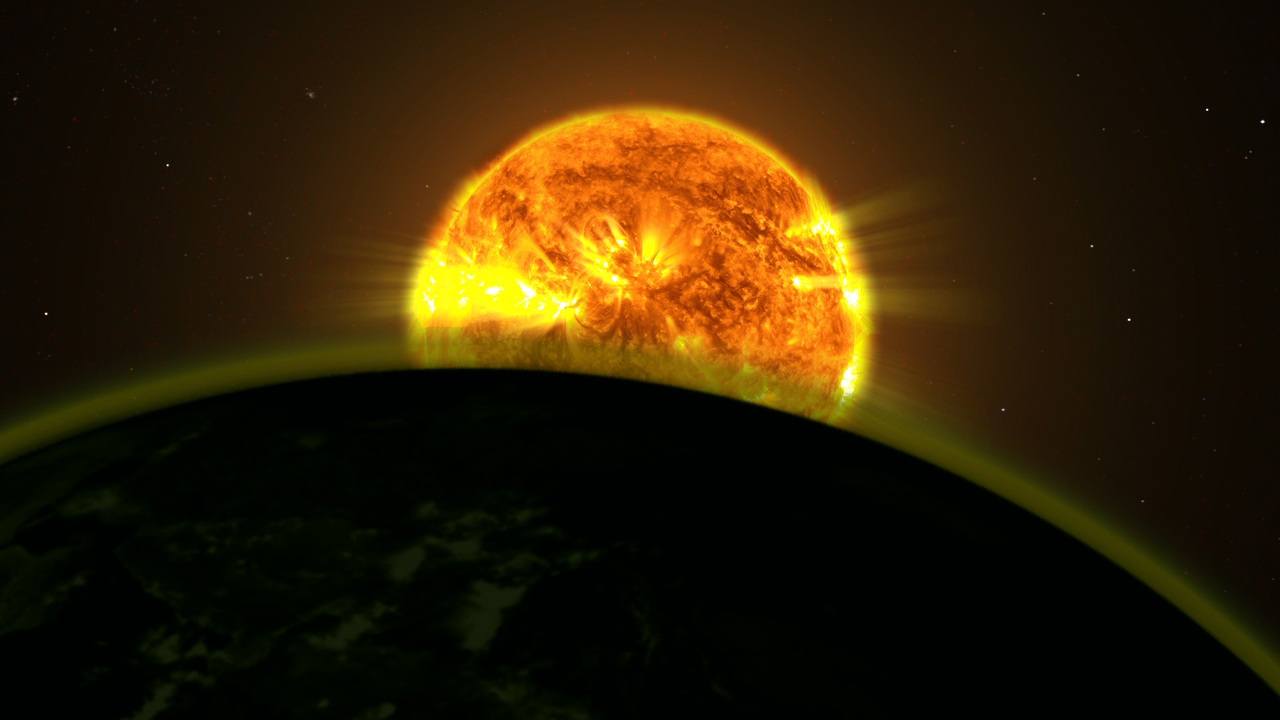Using Color to Search for Alien Earths
NASA astronomer Lucy McFadden and UCLA graduate Carolyn Crow recently made a discovery that will help identify characteristics of extrasolar planets, such as the compositions of their surfaces and atmospheres. By comparing the reflected red, blue, and green light from planets in our solar system, a team led by Crow and McFadden was able to group the planets according to their similarities. As it turns out, the planets fall into very distinct regions on this plot, where the vertical direction indicates the relative amount of blue light, and the horizontal direction the relative amount of red light.
This technique works even when the source of the reflected light is visible only as a point, like exoplanets appear when observed through a telescope. Therefore, scientists can use it to identify earthlike planets more easily.
Video feature describing the process and implications of the planetary color analysis.
For complete transcript, click here.

Planets plotted on color table. With labels.

Planets plotted on color table.

Additional still from video

Additional still from video

Additional still from video
For More Information
Credits
Please give credit for this item to:
NASA/Goddard Space Flight Center
-
Animators
- Scott Wiessinger (UMBC)
- Chris Smith (UMBC)
- Dan Maas (Maas Digital)
-
Video editor
- Scott Wiessinger (UMBC)
-
Producer
- Scott Wiessinger (UMBC)
-
Scientists
- Carolyn Crow (UMD)
- Lucy McFadden (UMD)
-
Videographer
- Rob Andreoli (Advocates in Manpower Management, Inc.)
-
Writer
- Daniel Pendick (SP Systems)
-
Science writer
- Francis Reddy (University of Maryland College Park)
-
Graphics
- Francis Reddy (University of Maryland College Park)
Release date
This page was originally published on Tuesday, November 2, 2010.
This page was last updated on Wednesday, May 3, 2023 at 1:53 PM EDT.
Series
This visualization can be found in the following series:Tapes
This visualization originally appeared on the following tapes:-
Planet Color
(ID: 2010100)
Thursday, September 30, 2010 at 4:00AM
Produced by - Robert Crippen (NASA)
